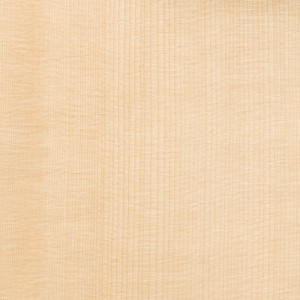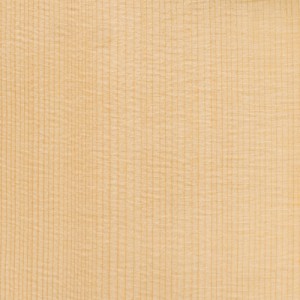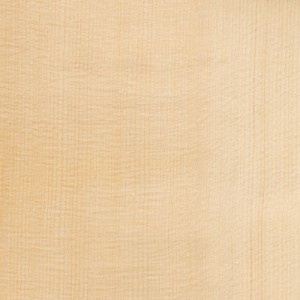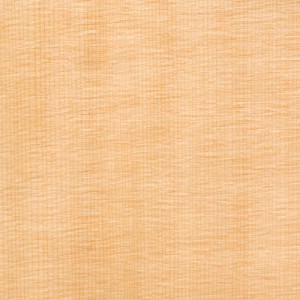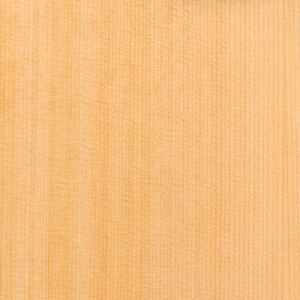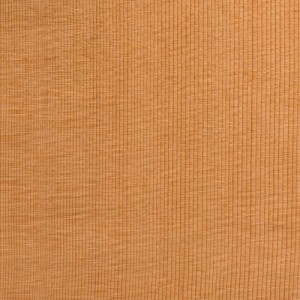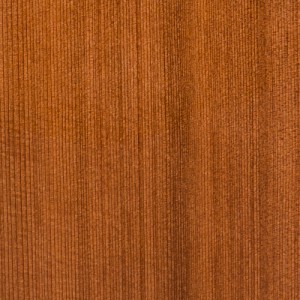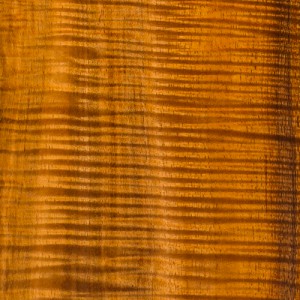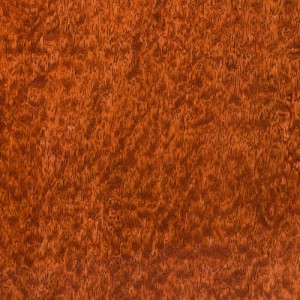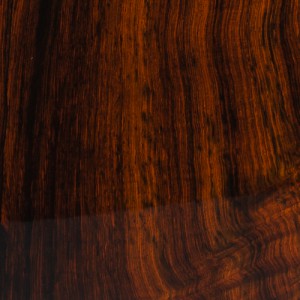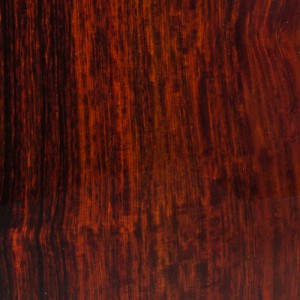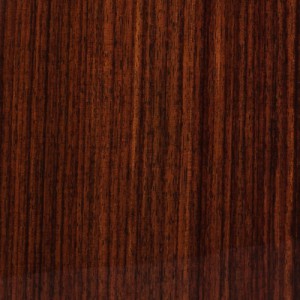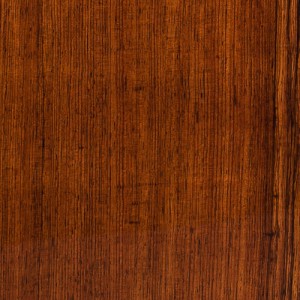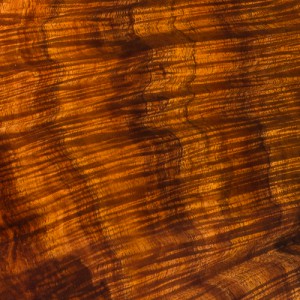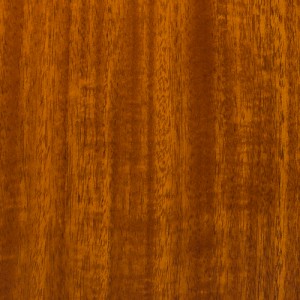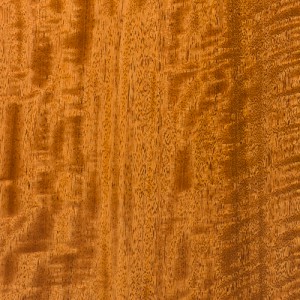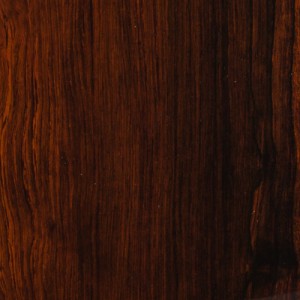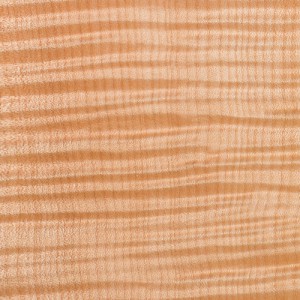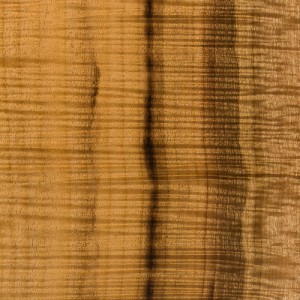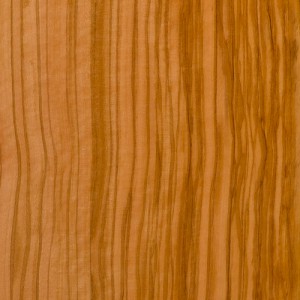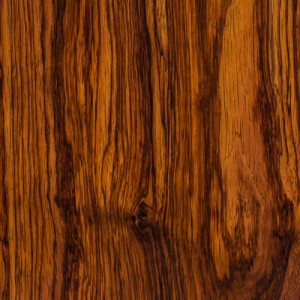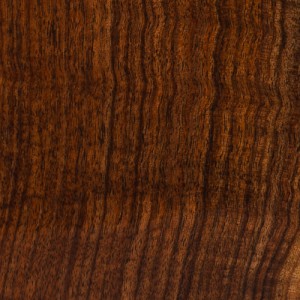Lets Talk About Tone
It's the primary reason you're here.
Your soundboard tonewood is going to produce the majority of your guitar's tonal characteristics, with the back and sides influencing the rest. Different woods produce different tonal characteristics and each species has it's own unique aesthetic qualities. You're looking for the best acoustic tone available, and we endeavor to consistently deliver on that desire regardless of the chosen tonewood species. The following list is designed to give you information about the look, location, density, and details of interest of each species, with recommendations from James Goodall regarding ideal species combinations for different playing styles and model sizes.
There are four main factors that we take into account when we grade our tonewood: color, grain straightness, quartersawn grain, and grain run-out. Grading standards vary based on the desirability of certain properties within each species. The attributes that constitute our grading will vary from species to species based on a wide range of factors, but you can know that we provide the highest quality selections available within each grade level.

Top Soundboard Woods
Origin: Eastern North America
Density: 435 kg/m3
Characteristics: Red Spruce is typically a creamy white, with a hint of yellow and/or red.
Details: Red Spruce compares very similarly with Sitka Spruce in terms of mechanical properties. It has a fine, even texture, and a consistently straight dark grain albeit with some variety of width variations. Quartersawn billets of instrument-grade Red (Adirondack) Spruce can easily exceed the cost of almost all domestic hardwoods in terms of per board-foot cost. Adirondack Spruce was used for the tops on many of the great pre-war American guitars. Many guitarmakers today believe that this wood is a significant contributing factor to the strong, clear tone of those vintage/collectible instruments. Finding available logs that will yield full dreadnought sizes in a quality similar to the Sitka and Engelmann Spruce available today is very difficult.
Origin: Western North America
Density: 350 – 410 Kg / m3
Characteristics: Engelmann Spruce is usually a cream to almost white color, with an occasional hint of red.
Details: Wood from slow-grown trees at high altitude has a specialized use in making musical instruments such as acoustic guitars, harps, violins, and pianos. In appearance it is like German Spruce, but unlike German Spruce, it seems to be more uniform in consistency. The tops are often more homogeneous looking with the early and late-growth rings being less distinct than those of Sitka. Like German Spruce, Engelmann has a beautiful ivory sheen.
Origin: Germany / Romania
Density: 405 - 450 Kg/m3
Characteristics: Creamy white, with a golden color.
Details: Because of its unsurpassed tonal characteristics, this species has proved itself above all others in the centuries-long history of instrument making: European spruce picea abies. The wood has to slow-grown, light in weight and yet exhibit a high degree of stiffness. European spruce meets these requirements. Favorable damping qualities, an optimal stiffness to weight ratio, and internal friction are the criteria most sought after in good tonewood.
Origin: Italy
Density: 405 - 450 Kg/m3
Characteristics: Creamy white, with a golden color.
Details: This is the exact same species of wood as German Spruce, but it comes from a different region and so has slightly different attributes. It is just a bit warmer in color and the winter grain, when visible, is a bit pinker. Tonally, it is said be more focused with a slightly stronger fundamental than regular German Spruce.
Origin: Sitka, Alaska
Density: 400 – 450 kg/m3
Characteristics: Creamy white, sometimes with a subtle pinkish hue.
Details: Sitka spruce is used widely in piano, harp, violin, and guitar manufacture, as its outstanding strength-to-weight ratio and regular, knot-free rings make it an excellent conductor of sound. It is available in large, straight-grained pieces, lending this timber to a wide range of commercial uses. It is by far the largest species of spruce, and has been documented to reach 300 feet in height.
Origin: Sitka, Alaska
Density: 410 - 465 kg/m3
Characteristics: Creamy white, sometimes with a subtle pinkish hue. Varied bearclaw ripple patterns. Often features a darker winter grain than it's non-bearclaw counterpart.
Details: Bearclaw grain is a visual treat. This spruce features subtle natural "bearclaw" striations that appear randomly across the grain. This is caused by a rippling of the longitudinal fibers, which alter the appearance of the surface of the wood with shimmering patterns. This gives the soundboard an especially distinctive appearance. Bearclaw sitka spruce has all of the characteristics of it's non-figured counterpart, but it is normally stiffer.
Origin: Pacific Northwest USA
Density: 465 kg/m3
Characteristics: Pale yellow-brown color, with straight even grain.
Details: Actually a rare variety of Cypress. So named because it was first discovered near Port Orford in Oregon. Port Orford Cedar is a hidden gem in the among other strong, lightweight timbers, possessing superb strength-to-weight ratio. It has a desirable workability for carving, turning & machining. It is highly prized for boat building, cabinetry, furniture, doors, etc.
Origin: Pacific Northwest USA/Canada
Density: 350 - 400 kg/m3
Characteristics: From light to dark reddish brown.
Details: Western red cedar is a commercially important lumber, used in a number of applications ranging from rough-sawn lumber for use in home construction, to clear quartersawn material for classical guitar soundboards. We have found that this cedar generally sounds more mature in it's tonal characteristics, when just built, than some spruce species which may take longer to develop into their aged qualities. Western red cedar sounds great, and is very stable.
Origin: Coastal northwestern USA
Density: 415-480 kg/m3
Characteristics: Color can range from a light pinkish brown to a deep reddish brown.
Details: Capable of attaining heights of nearly 400 feet, Redwood is the world's largest tree species. It grows in a very limited area on the Pacific coast of northwestern United States from central California to southwestern Oregon, where heavy rainfall and cool, damp air create a unique environment for these trees. Redwood lumber is very soft and lightweight, with a decent strength-to-weight ratio. It is also exceptionally stable, with very little shrinkage or seasonal movement, with a tone similar to Western red cedar.
Origin: Hawaii
Density: 610 - 720 Kg/m3
Characteristics: Color tends to be medium golden or reddish brown, similar to Mahogany. There are usually contrasting bands of color in the growth rings, sometimes appearing as ribbon-like streaks of color. Boards figured with wavy and/or curly grain are especially valued.
Details: Koa is widely considered to be the most beautiful and useful of Hawaii’s native hardwoods, and along with Monkey Pod and Mango, it is the most common Hawaiian species to be imported into the lower 48 United States. Visually, Koa has been compared to Mahogany, while in terms of working and mechanical properties, it has been compared to Walnut. Koa tends to be quite stable regarding environmental changes in humidity. When used as a soundboard on our Royal Hawaiian all-koa series, the set must be carefully selected to find the lightest weight available. This allows acoustic actuation of the top similar to spruce and we are able to achieve a sweet resonant tone when building an all-koa Goodall guitar.
Back & Side Tonewoods
Origin: Africa
Density: 700 - 900Kg/m3
Characteristics: Various red and pink colors with a slightly darker grain.
Details: An immensely popular African hardwood, known for it's strength and beauty. Bubinga can somewhat resemble rosewood, yet it also can have stunning grain features, such as pommele (pictured above), flamed, or waterfall. It has a great strength to weight ratio.
Origin: Brazil
Density: 850 - 950 Kg/m3
Characteristics: Dark chocolate brown to lighter purple or red-brown, with contrasting streaks. May have cross grain patterns sometimes referred to as "spider-webbing".
Details: Historically, it has perhaps been the species most frequently associated with the term “Rosewood,” and with its strength, hardness, stability, beauty, and acoustic properties, it’s easy to see why this species has been so widely used. The lumber is restricted from being imported or exported from country to country, and even finished products made of Brazilian Rosewood may not cross international boundaries due to its endangered status.
Origin: Central America
Density: 990 - 1250 Kg/m3
Characteristics: Orange or reddish-brown color with dark grain. Cream colored sapwood.
Details: One of today’s most prized lumbers for its outstanding color and figure. Due to its density and hardness, even a large block of the cut wood will produce a clear musical tone when struck.
Origin: India, Sri Lanka, Indonesia
Density: 830 - 900 Kg/m3
Characteristics: Range of colors that go from light brown to dark mauve. Can vary from a golden brown to a deep purplish brown, with darker brown streaks.
Details: Extensively used because of its great characteristics, it is known internationally as a premier timber species of the rosewood genus. Indian Rosewood has been used widely on acoustic guitars since the mid 1960s as a substitute for the now-endangered Brazilian rosewood.
Origin: Guatemala, Belize
Density: 1070 Kg/m3
Characteristics: Range of colors that go from light reddish brown to darker mauve.
Details: Honduran Rosewood is known for its acoustic properties, possessing an excellent tap-tone, making it well-suited for acoustic guitars, xylophone keys, and other acoustic musical instruments.
Origin: Hawaii
Density: 610 - 720 Kg/m3
Characteristics: Color tends to be medium golden or reddish brown, similar to Mahogany. There are usually contrasting bands of color in the growth rings, sometimes appearing as ribbon-like streaks of color. Boards figured with wavy and/or curly grain are especially valued.
Details: Koa is widely considered to be the most beautiful and useful of Hawaii’s native hardwoods, and along with Monkey Pod and Mango, it is the most common Hawaiian species to be imported into the lower 48 United States. Visually, Koa has been compared to Mahogany, while in terms of working and mechanical properties, it has been compared to Walnut. Koa tends to be quite stable regarding environmental changes in humidity.
Origin: Southern Mexico to Central South America
Density: 490 - 590 Kg/m3
Characteristics: Heartwood color can vary a fair amount with Honduran Mahogany, from a pale pinkish brown, to a darker reddish brown. Color tends to darken with age.
Details: Honduran Mahogany’s easy workability, combined with its beauty and phenomenal stability have made this lumber an enduring favorite. Honduran Mahogany goes by many names, yet perhaps its most accurate and telling name is Genuine Mahogany. Not to be confused with lower cost imitations, such as Philippine Mahogany, is what most consider to be the real and true species when referring to “Mahogany.” It is a very important commercial timber in Latin America, and is now grown extensively on plantations.
Origin: Southern Mexico to Central South America
Density: 490 - 590 Kg/m3
Characteristics: Heartwood color can vary a fair amount with Honduran Mahogany, from a pale pinkish brown, to a darker reddish brown. Color tends to darken with age.
Details: Honduran Mahogany’s easy workability, combined with its beauty and phenomenal stability have made this lumber an enduring favorite. Honduran Mahogany goes by many names, yet perhaps its most accurate and telling name is Genuine Mahogany. Not to be confused with lower cost imitations, such as Philippine Mahogany, is what most consider to be the real and true species when referring to “Mahogany.” It is a very important commercial timber in Latin America, and is now grown extensively on plantations.

Quilted Honduran Mahogany
Origin: Southern Mexico to Central South America
Density: 490 - 590 Kg/m3
Characteristics: Heartwood color can vary a fair amount with Honduran Mahogany, from a pale pinkish brown, to a darker reddish brown. Color tends to darken with age.
Details: Honduran Mahogany’s easy workability, combined with its beauty and phenomenal stability have made this lumber an enduring favorite. Honduran Mahogany goes by many names, yet perhaps its most accurate and telling name is Genuine Mahogany. Not to be confused with lower cost imitations, such as Philippine Mahogany, is what most consider to be the real and true species when referring to “Mahogany.” It is a very important commercial timber in Latin America, and is now grown extensively on plantations.
Origin: Southeast Asia
Density: 1,150 Kg/m3
Characteristics: Has a dramatic striped appearance, somewhat similar to Zebrawood. Light to reddish brown body with darker brown or black stripes.
Details: This elegantly beautiful wood is exceptionally hard, heavy, and strong. It has a rich, dark three-dimensional tone very similar in characteristics to Honduran and Cocobolo Rosewood, including a ringing tap tone. Looks especially nice with a Western Red Cedar or Sinker Redwood top and ebony or Curly maple binding. Makes a heavier instrument.
Origin: Madagascar, Africa
Density: 935 Kg/m3
Characteristics: Heartwood generally ranges from a light yellow-brown to a darker orange or reddish brown. Darker black streaks are common, and can produce a grain figure known as “spider-webbing” or “landscape,” also found on Brazilian Rosewood and Ziricote.
Details: Most similar wood to Brazilian Rosewood in looks. Madagascar Rosewood is comprised of a number of Dalbergia species only found on the African island of Madagascar. We feel it is tonally somewhere in between East Indian and Brazilian rosewood and suitable for a wide variety of playing styles. This species is now almost impossible to obtain.

Birdseye Maple
Origin: Northeastern America
Density: 705 Kg/m3
Characteristics: Unlike most other hardwoods, the sapwood of maple lumber is most commonly used rather than its heartwood. Sapwood color ranges from almost white, to a light golden or reddish brown, while the heartwood is a darker reddish brown.
Details: Birdseye Maple is not technically a distinct species of Maple, but rather, it’s a type of figure that is occasionally found in Sugar Maple trees which are commonly referred to as Rock Maple. It is named “birdseye” after the figure resembling small bird’s eyes. The figure is reportedly caused by unfavorable growing conditions for the tree. The Sugar Maple attempts to start numerous new buds to get more sunlight, but with difficult growing conditions the new shoots are aborted, and afterward a number of tiny knots remain. The birdseye figure is most noticeable and pronounced on flatsawn pieces of lumber.
Origin: Pacific North America
Density: 545 Kg/m3
Characteristics: Unlike most other hardwoods, the sapwood of maple lumber is most commonly used rather than its heartwood. Sapwood color ranges from almost white, to a light golden or reddish brown, while the heartwood is a darker reddish brown. Can also be seen with figured or quilted grain patterns.
Details: Bigleaf Maple is appropriately named, as its leaves are the largest of any maple, commonly reaching an overall width of 6 to 12 inches (15-30 cm) across. Bigleaf Maple is a commercially important hardwood timber for the United States’ west coast, where it is virtually the only commercial maple species in the region. Bigleaf Maple is considered to be in the grouping of Soft Maples, and its wood is lighter, and softer than that of Hard Maple. It is specially valued for its figure, and for other unique patterns like bird’s eye, quilt and spalt.
Recommendation: James favors this maple over Sugar/Rock Maple because it produces a richer, warmer voice, especially in the critically important tonal midrange. Many players have written off maple as a tonewood choice because of it's overly bright timbre, but our bigleaf maple instruments sound fabulous. Big Leaf Maple is a great choice for someone wanting a unique appearance and for studio recording because of its balanced bass response and even tone.

Quilted Maple
Origin: Pacific North America
Density: 545 Kg/m3
Characteristics: Unlike most other hardwoods, the sapwood of maple lumber is most commonly used rather than its heartwood. Sapwood color ranges from almost white, to a light golden or reddish brown, while the heartwood is a darker reddish brown. Can also be seen with figured or quilted grain patterns.
Details: Bigleaf Maple is appropriately named, as its leaves are the largest of any maple, commonly reaching an overall width of 6 to 12 inches (15-30 cm) across. Bigleaf Maple is a commercially important hardwood timber for the United States’ west coast, where it is virtually the only commercial maple species in the region. Bigleaf Maple is considered to be in the grouping of Soft Maples, and its wood is lighter, and softer than that of Hard Maple. It is specially valued for its figure, and for other unique patterns like bird’s eye, quilt and spalt.
Recommendation: James favors this maple over Sugar/Rock Maple because it produces a richer, warmer voice, especially in the critically important tonal midrange. Many players have written off maple as a tonewood choice because of it's overly bright timbre, but our bigleaf maple instruments sound fabulous. Big Leaf Maple is a great choice for someone wanting a unique appearance and for studio recording because of its balanced bass response and even tone.
Origin: Coastal southwest Oregon and central California
Density: 635 Kg/m3
Characteristics: Heartwood color can be variable, from light orangish brown to gray or olive, sometimes with darker streaks present. Pale sapwood is usually well defined. Figured grain patterns (curly, mottled, burl) are especially valued. Has a color range from blonde (like maple) to brown (like walnut).
Details: Considered a world-class tone wood and is sought after by luthiers. It is visually beautiful and has an extremely balanced and full tone with good over-tone harmonics. Technically not related to true myrtle (Myrtus genus), Myrtle is the only species in the Umbellularia genus, and is in the Lauraceae (Laurel) family. It’s sometimes called California Laurel, and the leaves have a pungent flavor similar to Bay Laurel.
Origin: Europe and eastern Africa
Density: 990 - 1050 Kg/m3
Characteristics: Heartwood is a cream or yellowish brown, with darker brown or black contrasting streaks. Color tends to deepen with age. Olive is somtimes figured with curly or wavy grain, burl, or wild grain.
Details: Olive trees are commercially important throughout the natural regions where they grow. The olives harvested from the trees are made into olive oil. Beautiful colors, amazing contrast and light figuring combine to yield exquisite beauty. The high density, which is similar to Macassar Ebony, yields rich, full and balanced tonal qualities, making Olive a desirable tonewood. A historical Biblical wood.
Origin: Mexico
Density: 620 Kg/m3
Characteristics:
Dark orange - tan wood with reddish-brown lines that create unusual patterns in some sets. It shows attractive shades of red and golden brown, and is often figured.
Details: Palo Escrito is a premiere native back and side wood used by the luthiers in Paracho, Mexico. It is a great choice for our nylon string Crossover and Classical guitars because of it's rich tone and fast response. It is also an excellent choice for our steel string instruments with possibly slightly less over-tone harmonics than the denser rosewoods. It is a true rosewood, but differs from Indian Rosewood visually with slightly wider grain, more figure, lighter orange color and slightly lighter weight. Each set has a unique grain pattern which is quite striking in appearance. The AAA quality jumbo sets feature mostly straight grain and more even color than the AA grade. The AA grade often has more flat sawn figure, which is also uniquely beautiful.
Origin: California
Density: 550 - 660 Kg/m3
Characteristics: Heartwood can range from a lighter pale brown to a dark chocolate brown with darker brown streaks. Color can sometimes have a gray, purple, or reddish cast.
Details: Claro Walnut is a native to California and an agriculturally important species that’s used as rootstock for walnut orchards. The robust roots of Juglans hindsii are well-suited to the California climate, and are combined with grafts of English Walnut to produce a higher yield of walnuts. We feel it's tone is a good balance between East Indian rosewood and mahogany with a nice warm sweetness and a clear, fast response. If overall weight of the instrument is a consideration it makes a lighter guitar. It is quite stable.
Understanding Tonewood Grading
Good, better, best, and special reserve
We select our tonewoods based on a grading scale. Good is the equivalent of "AA", Better is the equivalent of "AAA", Best is the equivalent of "AAAA", while Special Reserve is for tonewood that exceeds expectations with spectacular characteristics for it's species. Not all species have all of these grades, for instance - East Indian Rosewood only has "AA" and "AAA", but the "AAA" grade represents our best quality. The representative images shown above are generally some of our high end grades, and all images were captured from finished instruments.
Color
Higher soundboard grades have more consistent color. Color affects the instrument's appearance only, not its tone.
Grain straightness/closeness/stiffness
Higher soundboard grades have straighter, more uniform grain due to slower wood growth. Variations in grain width (yearly growth lines) generally doesn't negtively affect tone or the wood's structural integrity. Closely spaced grain has possibly been traditionally favored, but we have found that wider grain can also produce excellent tone. Close grain is not necessarily an indication of stiffness.
Quartersawn Grain
The higher the grade, the more closely quarter sawn (vertical grain) the wood. Higher grade soundboards are usually stiffer, stronger and more resilient, and less likely to deform under string tension. But we also tend to choose a more flexible top for our smaller bodied instruments to warm up the bass response.
Grain Run-Out
Our soundboards are sawn from split billets to reduce the amount of grain "run-out," caused by a twist in the tree. By splitting the log, the twist is followed when sawing. Higher grade soundboards have less run-out, for more strength. However, properly braced lower grades still make excellent soundboards.
